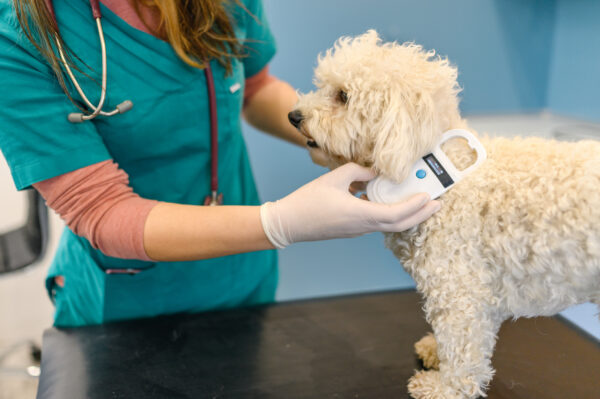Summer is finally here! In an effort to stop your pet bringing home any unwanted visitors, we’re focusing on flea bites, flea infestation, and flea treatment for both dogs and cats.
Does my dog have fleas?
Fleas and flea bite allergies are a common problem for dog owners and cat owners alike. Research has shown that 10% of the UK’s dog population and 20% its cats will be harbouring fleas as you read this.
Am I at risk of a flea infestation?
Two questions that are frequently asked are “Can fleas fly?” and “Do fleas jump?”. To answer both in one – no. But they do leap. When this happens, they begin to feed by penetrating the skin and sucking your pet’s blood. Thankfully, most pets will only require a flea treatment.
For pets allergic to flea saliva, these flea bites can cause intense itchiness and inflammation of the skin. The natural reaction to itchy skin – scratching – can lead to hair loss and self-trauma, and even bacterial infection in some cases. If this is your pet, it’s important that they are referred to a vet – not only will they need flea treatment, they will also need medication to treat the itchy, inflamed, and possibly infected skin.
24 hours after feeding, the female flea will lay flea eggs in your pet’s coat – as many as 50 per day! These flea eggs will fall from your pet as they move through your home, scattering everywhere. When the eggs hatch, the larvae will emerge and seek darkness, such as deep within carpets, between floor boards, and within bedding. This means that your home could have a flea infestation and you might not even know. That’s why it’s important to treat your home as well as your pet, as yes – dog and cat fleas can bite humans, too. Ouch.
When the time is right, the larvae will transform into pupae, which will develop into fleas. The pupal stage can be regarded as a state of hibernation, as they are resistant to chemicals and can remain viable for up to 12 months.
Once developed, immature (and hungry) fleas will emerge from their protective cocoons in response to changes in temperature, humidity, and nearby vibrations –poised to leap onto the next pet or human that passes by. It is key to be able to recognise the signs of fleas, have flea treatment to hand, and understand the dangers between dog fleas and humans at any time of the year.
I think my pet has fleas – now what?
Not sure what to do if your dog has fleas? In short, you need to break the flea life cycle. This requires flea treatment that kills fleas already on your pet – be it flea shampoo, flea repellents (such as sprays), combs/collars, or topical treatments such as frontline for cats, frontline for dogs, or frontline plus.
Due to the environmental burden of flea eggs, larvae, and pupae, a flea infestation may take longer than anticipated to resolve. Even after treating your pet for flea bites, new fleas will continue to emerge from any existing viable pupae. The time taken to fully quash a flea infestation will depend upon the quantities of each life cycle stage in your home. Saying that, the process can be accelerated with effective flea treatments.
Top tips on how to get rid of fleas in the house and from your pet:
- Administer the flea treatment according to the manufacturer’s instructions and repeat at the recommended intervals.
- Make sure that ALL household pets are treated with a suitable flea product.
- Check your pet’s body weight to avoid under dosing.
- Thoroughly clean ALL dog bedding and cat bedding on 60°C+ cycle to kill eggs and larvae.
- Vacuum all areas that your pet visits – including the car – to remove eggs, larvae, and pupae. The vibrations from your vacuum cleaner will stimulate pupation, meaning new fleas will jump onto the treated animal. This is good, as it means they will be killed straight away.
- For the same reason, we recommend turning on the central heating and placing damp towels over the radiators.
- Use specialised household sprays and flea treatment for carpet after vacuuming to kill flea eggs and larvae.
How do cats get fleas?
As fleas can easily leap from one animal to another, it is important to treat ALL pets that share the same home – this will help to ensure that the flea life cycle is broken. You don’t want to think you’ve quashed your flea infestation for your cat to waltz them right back into the house. With continual outdoor access, cats are the more likely pet to bring fleas into the home. Make sure you’re prepared with a flea bite treatment for cats at hand.
Our articles are not a replacement for face-to-face vet advice. It’s important to consult with your vet on a regular basis to raise any pet concerns that you may have.



